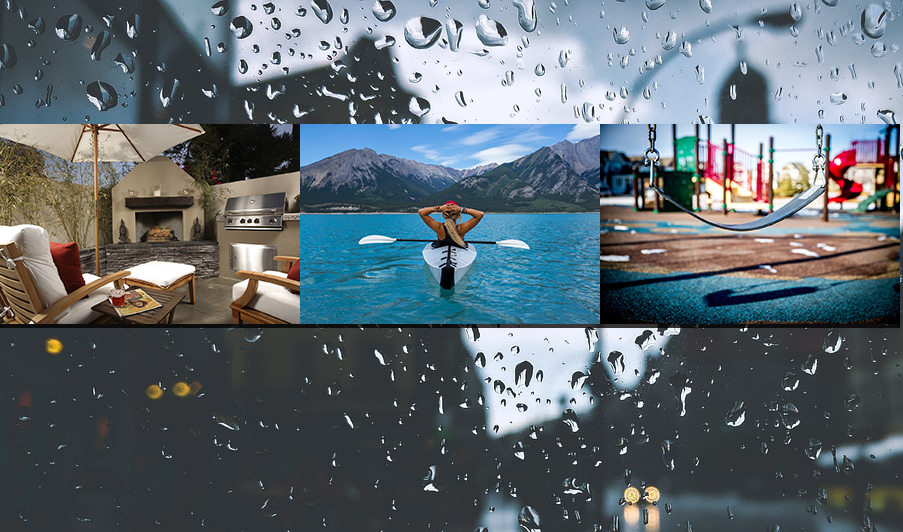One of polymer resins’ strongest suits undoubtedly lies in it’s ability to help products endure the elements. This can add years to a product’s lifecycle which ultimately helps sell more products to consumers. Product manufacturers heavily focus on weather resistance for this exact reason. Outdoor applications are as popular as ever, particularly in the technology realm; thus, weather-resistant materials such as ASA are a core component.
Let’s explore how ASA helps bring longer life to a myriad of our everyday outdoor applications.
What is ASA?
Acrylonitrile Styrene Acrylate (ASA) is a thermoplastic polymer popular for it’s impressive ability to withstand prolonged exposure to harsh elements. In regards to the elements, we’re highly concerned with sunlight and moisture.
ASA is a solution to the limitations found in ABS (Acrylonitrile Butadiene Styrene).
ASA offers both UV stability and weather resistance without compromising it’s strength, nor it’s aesthetic value. This means the products using ASA remain durable and easy on the eyes, which is important to buyers.
ASA emerged as demand grew for materials that could endure harsh outdoor conditions. Look no further than the recent surge in popularity for outdoor deck revamps that often include TVs and furniture, or other home needs such as backyard playgrounds and home siding. All of these materials rely on weather resistance as a main component.
ASA features three main components:
- UV Resistance: ASA’s standout feature is its resistance to ultraviolet radiation, allowing it to retain color and mechanical properties over extended periods of sunlight exposure.
- Weatherability: Beyond UV resistance, ASA exhibits excellent resistance to rain, snow, and temperature extremes, making it a preferred choice for outdoor applications.
- Durability: It maintains high toughness and rigidity, making it suitable for demanding applications.
Due to this, ASA’s impressive use cases center around outdoor applications.
Where We Find ASA Use Cases

The use of ASA materials are all around us. Here are some popular examples of ASA supporting an outdoor application.
Automotive

Many automotive exteriors leverage the power of ASA. These include bumpers, mirror housings, and grille components. The automotive industry relies on materials which offer not only durability, but durability that doesn’t sacrifice the aesthetic value of their products. ASA accomplishes this in spades.
Construction
A variety of polymer resins are used in construction, but it’s ASA that helps give your window frams, siding, and roofing, the much needed weather durability that we take for granted in today’s world. ASA offers a number of advantages to the use of Polyvinyl Chloride (PVC), including more robust UV resistance and an ability to maintain mechanical and aesthetic properties following prolonged expires to rough weather events such as rain and snow. ASA’s ability to resist UV rays means it maintains its color much better than PVC when exposed to sunlight over the longer term.
More importantly, PVC has been under scrutiny for years regarding environmental concerns. Chlorine present in PVC can release dioxins, which are environmental pollutants. This is particularly true when PVC is burned. ASA doesn’t share these chlorine-related concerns.
Outdoor Recreational Equipment
In one of the more popular ASA use cases, we find ASA supporting outdoor furniture, playground equipment, and sports gear. In these cases it’s not just durability that’s a main focus, but also ASA’s ability to provide safety and longevity.
But this is only the beginning.
Here are some other popular outdoor products that make use of ASA’s powerful abilities to resist the elements while remaining aesthetically pleasing.
- Outdoor light fixture casings.
- Bicycle parts
- RVs and their accessories
- Water sports equipment
- Camping gear
- Portable coolers – ASA’s thermal abilities play a role in these now popular expensive coolers on the market.
The outdoor lifestyle has been vastly improved over the years in large part to the advancements of ASA materials.
Marine Applications
Boat hulls and numerous marine hardware utilize ASA for it’s extreme weather resistance. Marine products often have the more daunting issue of salt water resistance, which ASA helps ensure. In the marine industry, materials are constantly challenged by harsh environmental conditions, ASA offers a balance of aesthetic appeal, durability, and resistance to these harsh elements.
Another redeeming quality for ASA use in marine applications is its impact resistance. Personal watercraft often sustain impacts due to harsh environmental conditions, ASA helps to ensure safety and durability in these cases.
Moreover, the excellent color retention properties of ASA make it suitable for signage, ensuring legibility and aesthetics over long periods. So yes, those fancy boat name signs can last a lifetime when ASA enters into the equation.
Conclusion
ASA’s use across lots of popular outdoor applications highlights its impact products and goods we use both daily, and seasonally. ASA helps protect our homes, playground sets, outdoor light fixtures, and boats from the harsh elements. ASA continues to evolve and is finding more and more manufacturing use cases.

